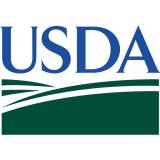Despite Winter Improvements, Drought Continues in Parts of the Midwest.
This Midwest Drought Status Update is released in coordination with the January 19, 2023 North Central U.S. Climate and Drought Outlook Webinar. View the webinar for more details.
Key Points
- Portions of the Midwest region have seen significant improvement in drought conditions since the beginning of winter, particularly across areas in the Ohio River Basin.
- Currently, 19% of the Midwest region is in drought (moderate to exceptional), which is 28% less than eight weeks ago in late November.
- Despite the improvement in some areas, extreme to exceptional drought (D3–D4) persists across northwest Iowa. Moderate to severe drought (D1–D2) also remains across Minnesota and Michigan.
- Northwest Iowa, Minnesota, and western Wisconsin have received above-normal precipitation since December 1, 2022. This precipitation has been helpful to add water to the landscape. However, the ability to improve drought and replenish soil moisture, which was very low at the end of fall, is limited when the ground is frozen. Unfortunately, it is too early to determine the full benefit of the winter precipitation thus far.
- The February outlook shows the chance for above-normal precipitation to continue across most of the region, particularly the Great Lakes and Ohio River Basin. Far-western portions of the region that are in drought (western Iowa and northwest Missouri) have equal chances for above-, near-, or below-normal precipitation.
- Continued above-normal precipitation this winter will likely be beneficial for drought improvement. However, if soils are frozen, this will limit the ability to replenish soil moisture and therefore improve drought ahead of the upcoming growing season.
- In addition, above-normal precipitation in the winter is not a significant amount of water, as this on average is the driest time of year. Therefore, we will need multiple episodes of soaking rainfall and/or snow melting over thawed soils to significantly improve the areas still in drought.
The U.S. Drought Monitor (USDM) is updated each Thursday to show the location and intensity of drought across the country. Drought categories show experts’ assessments of conditions related to dryness and drought including observations of how much water is available in streams, lakes, and soils compared to usual for the same time of year. This map shows drought conditions for the Midwest as of January 17, 2023.
U.S. Drought Monitor Categories
Abnormally Dry (D0)
Abnormally Dry (D0) indicates a region that is going into or coming out of drought. View typical impacts by state.
Moderate Drought (D1)
Moderate Drought (D1) is the first of four drought categories (D1–D4), according to the U.S. Drought Monitor. View typical impacts by state.
Severe Drought (D2)
Severe Drought (D2) is the second of four drought categories (D1–D4), according to the U.S. Drought Monitor. View typical impacts by state.
Extreme Drought (D3)
Extreme Drought (D3) is the third of four drought categories (D1–D4), according to the U.S. Drought Monitor. View typical impacts by state.
Exceptional Drought (D4)
Exceptional Drought (D4) is the most intense drought category, according to the U.S. Drought Monitor. View typical impacts by state.
The U.S. Drought Monitor (USDM) is updated each Thursday to show the location and intensity of drought across the country. Drought categories show experts’ assessments of conditions related to dryness and drought including observations of how much water is available in streams, lakes, and soils compared to usual for the same time of year. This map shows drought conditions for the Midwest as of January 17, 2023.
U.S. Drought Monitor 8-Week Change Map

February 2023 Precipitation Outlook

Report your Drought Impacts through Condition Monitoring Observer Reports (CMOR):
For More Information
- NIDIS and its partners will issue future updates as conditions evolve.
- More local information is available from the following resources:
- To report or view local drought impact information:
- Report your Drought Impacts through Condition Monitoring Observer Reports (CMOR)
- View CoCoRaHS Condition Monitoring reports.
- The North Central U.S. Climate and Drought Summary & Outlook Webinar on January 19, 2023 provided more information about conditions, impacts, and outlooks.
Prepared By
Molly Woloszyn
NOAA/National Integrated Drought Information System (NIDIS), CIRES/CU Boulder
Doug Kluck
NOAA/National Centers for Environmental Information
Dennis Todey
USDA Midwest Climate Hub
This drought status update is issued in partnership between the National Oceanic and Atmospheric Administration (NOAA) and the U.S. Department of Agriculture (USDA) to communicate a potential area of concern for drought expansion and/or development within the North Central U.S. based on recent conditions and the upcoming forecast. NIDIS and its partners will issue future drought status updates as conditions evolve.





